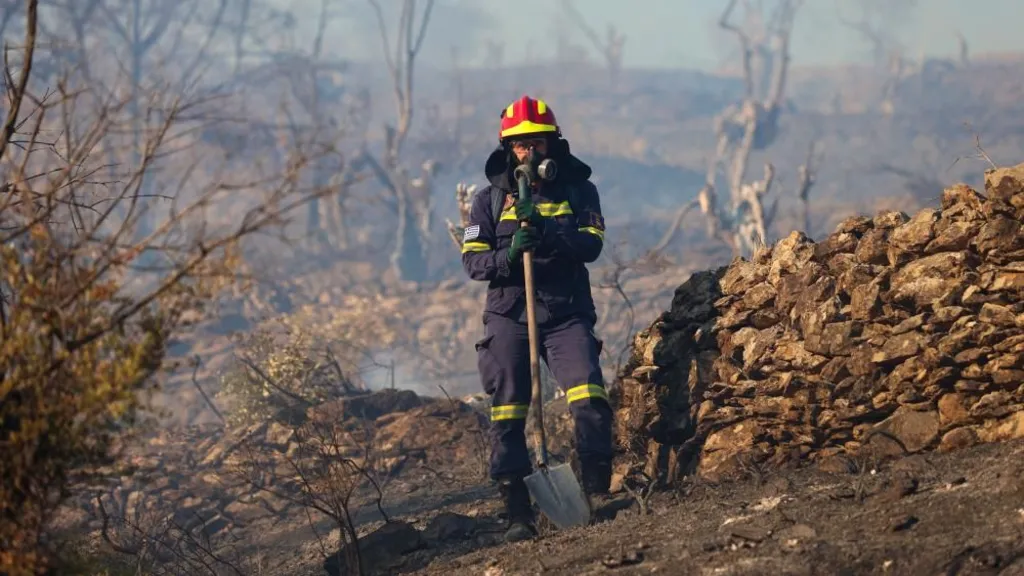Meteorologists attribute the current surge in temperatures across numerous parts of the world to global warming. While a few regions are experiencing cooler conditions, the majority are enduring significantly warmer weather than usual. North America, southern and eastern Asia, and southeastern Europe are among the areas experiencing extreme temperatures.
“It is a worldwide heat wave that we are now suffering from. That puts the heat under our decisions,” said Christiana Figueres, a former U.N. climate agency chief.
Recent studies by the World Weather Attribution (WWA) group reveal that human-induced climate change has substantially increased the likelihood of extreme heat events, such as those seen recently in the U.S. Southwest, Mexico and Central America. According to the WWA, the recent U.S. heatwave was approximately 35 times more likely due to climate change. During this period, extreme temperatures in Mexico also led to fatalities.
Scientists caution that although detailed attribution studies take time, the rising frequency and intensity of heat waves globally are clear indicators of climate change. Their latest report indicates that heat waves like the current one affecting the central U.S. to northeastern Canada are now four times more likely than in 2000, primarily due to emissions that contribute to global warming.

Izidine Pinto, a researcher at the Royal Netherlands Meteorological Institute, stressed the urgency of the findings, warning that without significant reductions in fossil fuel emissions, hazardous heat events will continue to intensify. This will result in more deaths and increased living costs.
The WWA study focused on a region encompassing the U.S. southwest, Mexico, and parts of Central America, including Guatemala, Belize, El Salvador, and Honduras, all of which have experienced dangerously high temperatures.
The scientists found that climate change had increased the temperature of the hottest five-day period in June by about 1.4°C. Karina Izquierdo, Urban Advisor at the Red Cross Climate Centre, emphasized that even small temperature increases significantly heighten health risks, noting that the additional 1.4°C of heat caused by climate change could mean the difference between life and death for many people during May and June.
The heatwaves have also had devastating effects on wildlife, with reports of howler monkeys dying in Mexico. Officials in various affected countries have highlighted the dangers posed by high nighttime temperatures, which prevent the body from recovering after hot days.
The WWA group conducts rapid-attribution studies on weather events worldwide to assess the role of climate change in their severity. By comparing current conditions with models of a world without human-induced global warming, scientists aim to provide critical insights into the impacts of climate change.
Regional Impacts
India: Northern India is experiencing a prolonged heatwave, with temperatures reaching 44-45°C. This extreme heat has led to record power consumption as residents heavily rely on fans and air conditioners, causing power cuts in Delhi.

Water supplies in the city have also been disrupted. Since the onset of summer in March, dozens of heat-related deaths have been reported, including 50 fatalities over three days earlier this month in the states of Uttar Pradesh and Odisha.
Saudi Arabia: Extreme heat in Saudi Arabia has resulted in the deaths of over 1,000 pilgrims during the annual Hajj pilgrimage in Mecca. The Saudi National Meteorological Center recorded a high of 52°C at the Grand Mosque, underscoring the severe conditions faced by worshippers.
Greece: Greece has reported several deaths during its earliest recorded heatwaves, affecting both locals and tourists, including British TV and radio presenter Michael Mosley. Authorities have responded by closing landmarks such as the Acropolis in Athens and shutting down schools. Firefighters are also combating wildfires, exacerbated by hot winds from North Africa.
These incidents underscore the global reach and diverse impacts of extreme heat waves, exacerbated by climate change. They reinforce the urgent need for concerted international efforts to mitigate the effects of climate change and reduce emissions to prevent further escalation of these dangerous conditions.

What Can We Expect in the Near Future?
Even if all carbon emissions were halted today, the world has already released enough greenhouse gases to ensure that climate change will continue to push temperatures upward for decades. According to scientists from the Intergovernmental Panel on Climate Change (IPCC), the world must cut emissions in half from 1995 levels by 2030 and reach net zero by 2050 to keep the average global temperature rise to around 1.5°C (2.7°F) above the pre-industrial average.
However, instead of decreasing, global emissions have continued to rise since 1995. If current trends continue, the world is on track to reach a temperature increase of 2.7°C (4.9°F) by 2100. This far exceeds the 1.5°C (2.7°F) threshold, beyond which scientists predict catastrophic and irreversible climate impacts.
The unprecedented heat waves affecting millions of people in the United States underscore the urgent need to address climate change. Christiana Figueres, a key figure in climate change negotiations, highlighted this urgency in a statement to Reuters on Thursday, emphasizing that the severity of these heat waves indicates that we have not yet faced the worst of climate change.
By AMT staff














